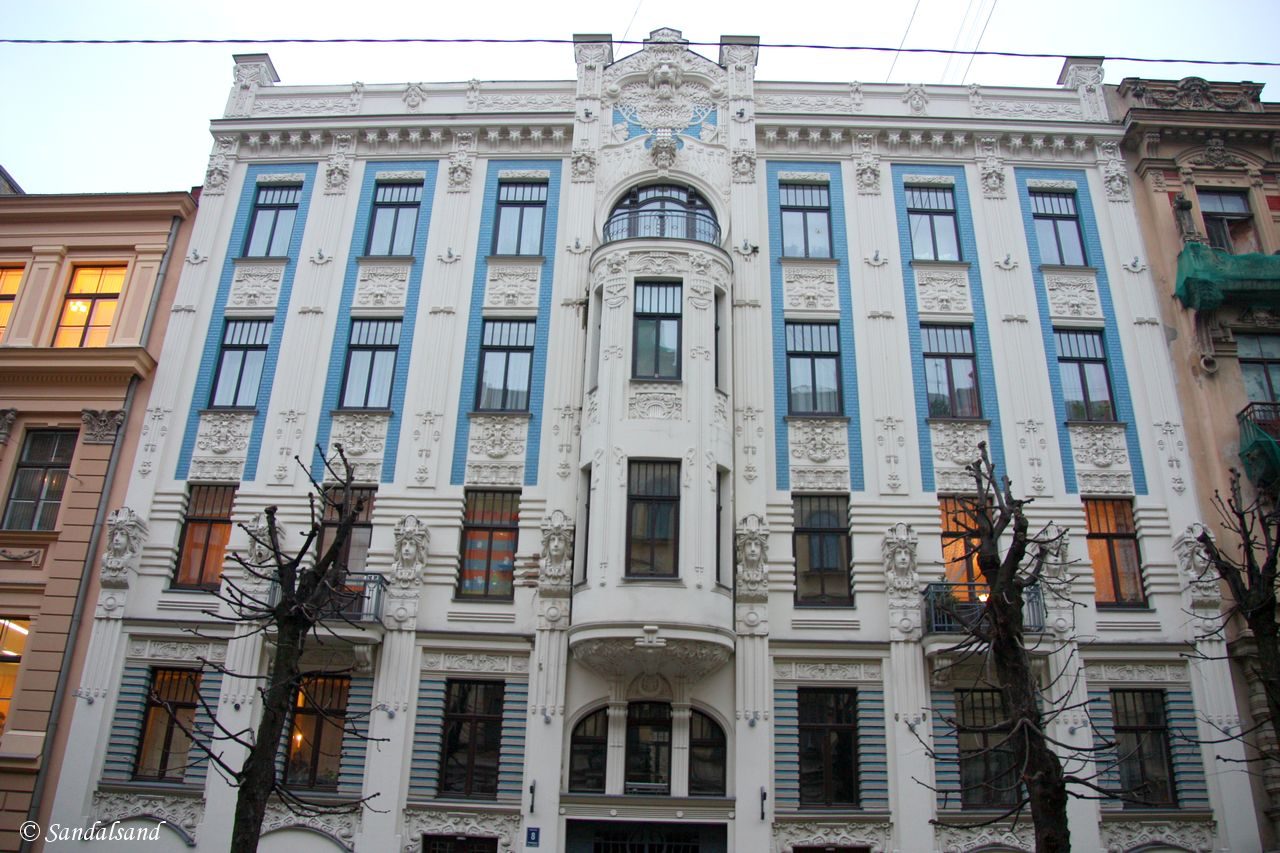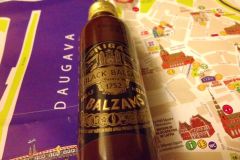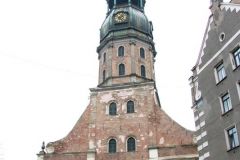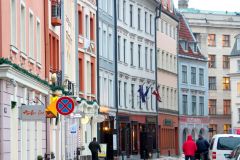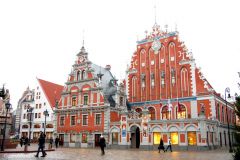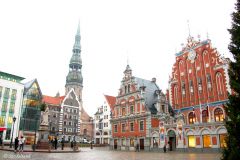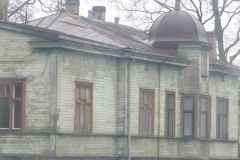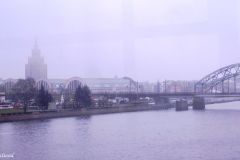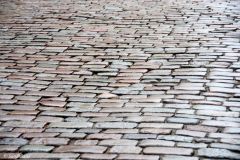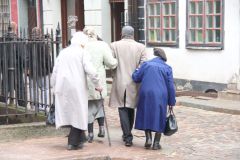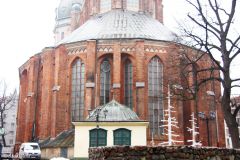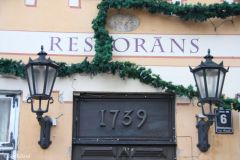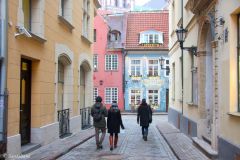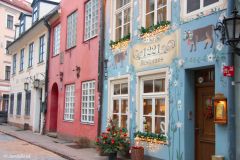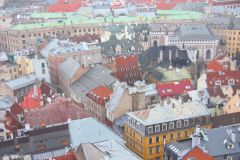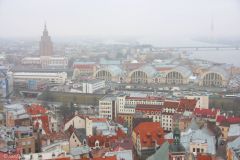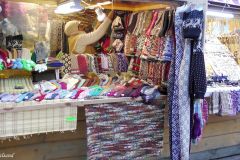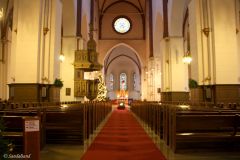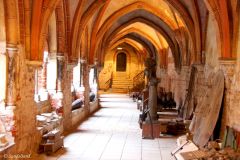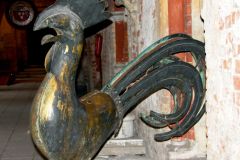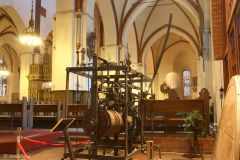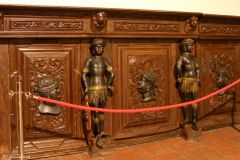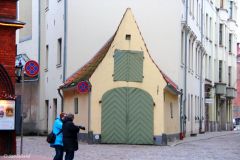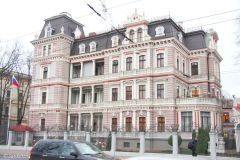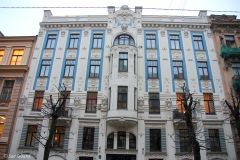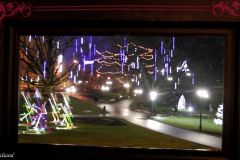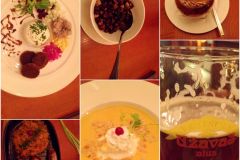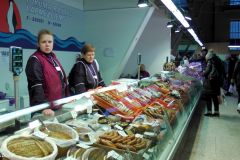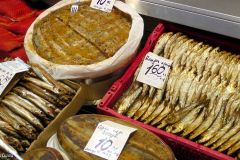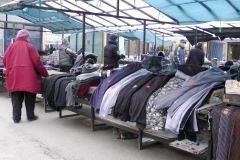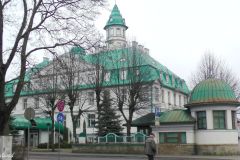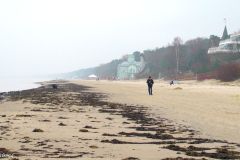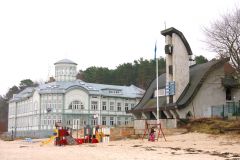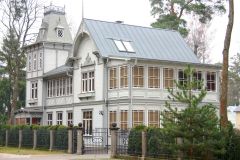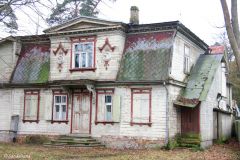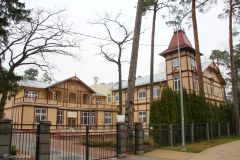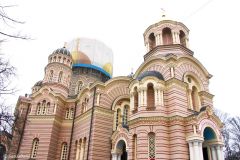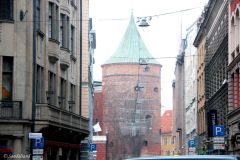Riga has been exploding as a tourist destination for the last decade, at least for us Norwegians. Female parties are flocking to Riga for weekend wining, dining, shopping, and spa.
Background
We men would rather go to a European city with an exciting football team, but the beer in Riga is good, they have Riga Balsam and the town is full of restaurants and bars.
I came primarily to Riga for one reason: Its Old Town is a UNESCO World Heritage Site, and I was on a trip to four capitals, four old towns and four Heritage Sites in eight days. Read my introduction.
I was skeptical, and yes I did find a touristy city centre. It was not as easy-going as Vilnius the previous days, or Tallinn the next days. But Riga has charm, atmosphere and a lot to see. I even had a half-day excursion to the beach resort area of Jurmala, but the week before Christmas is hardly the time of year to go swimming in the Baltic Sea.
Some fast facts
Riga houses a third of Latvia’s two million inhabitants. It is, and has always been a very dominating city in this region. In the Middle Ages it was a central trading port for the Hanseatic League, and it prospered from trade also in later periods. Riga and Latvia was part of the Soviet Union, but was also included in the Russian Empire for centuries before that. More than a quarter of the population is Russian. Ideas and endeavours of autonomy came and went, and the latest period dates back only a couple of decades. Today Latvia is part of the EU and of NATO.
Getting around
I did initially a hop-on hop-off city bus tour, except that I stayed on the bus for the duration of the one-hour tour. Instead I used the tour to get an overview and returned on foot to the most interesting sites. Besides, the most picturesque streets inside the old town are only accessible on foot.
The central part of Riga
Riga’s proud history is easily seen in the very city centre. Narrow streets, and some very fine Gothic churches (visit the Cathedral and take the elevator to the top of St. Peter’s for a superb view of the city). You will discover several exciting squares lined by restaurants and bars, and a multitude of picturesque and colourful small buildings along the streets.
The House of the Blackheads was once the centre of German merchants, but the Dutch architecture heritage was to me more clearly evident.
All this will easily keep you occupied for a weekend and more.
I was lucky to arrive here shortly before Christmas. There were Christmas trees on several of the centre’s squares and also some very good Christmas markets selling everything from glühwein to quality knitwear.
Outside the central nave
However there is more to Riga, not least outside the central part. For a start, continue past the railway station and the adjacent modern shopping centre to visit the Central Market in the old German Zeppelin hangars. Here you will find Europe’s largest bazaar selling everything from plastic buckets, cheap radios, everyday clothes, dried meat and fresh fruit, fish and bread. This is where the Riga inhabitants come, and you should too.
In this part of town I noticed one more of Stalin’s gift to the East Bloc, a towering skyscraper. I had a few days before visited one in Warsaw, and a couple of years previously a series of them in Moscow.
Riga is a World Heritage Site. The UNESCO committee is in particular interested in the rare wooden houses in the city centre and the extremely fascinating Art Nouveau buildings. I did not find many wooden buildings walking the streets of Riga, but we passed several of them on the bus ride. On the other hand I spent a couple of hours in the district across the canal containing a vast number of lavishly adorned Art Nouveau buildings. The Albert Street is not to be missed. My thoughts went to Aalesund in Norway.
I mentioned a park: Take a stroll on the streets next to, or walk on the paths along the canal of Pilsetas kanals forming the border between the Old Town and the Art Nouveau district.
Day-trip to Jurmala
Jurmala is only half an hour by train from Riga. It is an area of sandy beaches stretching for 30 km inside the Bay of Riga. This is where the population of Riga flock on the warmest summer days. I went for a walk in December, on an almost deserted beach. Fascinating. Beautiful beaches. Wrong time of year.
Even more fascinating were all the old wooden houses lining the streets inside the beach. Unfortunately a number of them were in decay. Jurmala was once a favourite among the Communist Party elite, but its history as beach resort dates back longer than that. I sincerely hope someone with money will be able to restore this wonderful area – and buildings – to its former glory.
Eat and sleep
I stayed two nights at the Wellton Old Riga Palace Hotel and labelled it “Disappointing”. My reward was 3 of 5 stars on TripAdvisor and the justification this: “Situated in the scruffy outskirts of the Old Town this hotel failed in several key points. My prepayment had not been registered, the key card functioned badly, the wifi inside the room was very poor. Used glasses in the room where not changed, only turned upside down with last nights contents stuck inside. The breakfast had free champagne but the rest was poorly presented, with three days old hard buns. The receptionists were unattentive and boringly formal. It is a charming place but could do a lot more.”
Riga is a touristy place and this is reflected in the night life and restaurant scene. There is no problem finding places serving good beefs, and I found one, the Steiku Haoss. On the other hand there are also touristy places aiming at presenting the visitors with more or less genuine medieval cuisine. I found a basement place called Rozengrals in the Old Town offering a dark dungeon-like appearance, a varied menu, and good food as well.
My most exciting meal I found on the Town Hall Square, next to the House of the Blackheads. Here at Salve I was served a set menu. It went like this: herring tartare, grey peas with smoked bacon, pumpkin soup, sausage and stewed cabbage, rye bread dessert, and dark beer. Tasty. And wholesome.
Read more
The week before Christmas 2013 I went on a fast moving road trip between four Eastern European capitals all with old towns inscribed on UNESCO’s World Heritage List. Read the introduction and the individual entries about Warsaw, Vilnius, Riga and Tallinn. You may also want to have a look at my entry about Riga as a World Heritage Site.
Images from Riga

